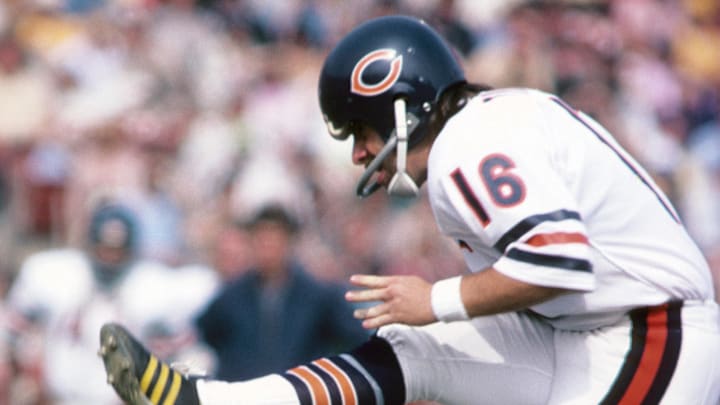
Bob Thomas earns degree during decade as Chicago Bears Kicker
The Chicago Bears struggled in the early parts of Thomas's career, but with the addition of rookie running back Walter Payton, the team had their eyes set on the future. From 1975 to 1977, the team recorded a 20-22 cumulative record, although they did finish second best in their division twice over the span.
In those 42 games, Thomas played in every contest and scored 189 total points. Notably, this total included a 55-yard field goal in his first season, which was long enough for the furthest kick of the year across the league. He also kicked the game-winning field goal in an overtime, 1977 contest against the New York Giants. Due to poor conditions, the field was covered by ice and snow in what would later be coined as the "Slush Bowl".
Thanks to Thomas's heroics, the team qualified for the 1977 postseason, their first appearance in the "modern" playoff format. The team ended up losing to the Dallas Cowboys, who would go on to win the Super Bowl, but Thomas made his only chance, kicking a point after the team's sole touchdown.
In 1978, the league established a 16-game season, adding two more contests from seasons prior, and coincidentally, Thomas experienced a major improvement around this time. From 1978-1980, Thomas improved his PAT percentage (93.1%) dramatically from his averages in a 14-game season (87.8%). He also increased his points per season average from 63 to 77.6. Of course, a kicker would score more points in a longer season. However, the league only added two games per year and statistically, his increase would've scaled more accurately to a three-game addition, meaning that Thomas improved in his scoring abilities.
Despite Thomas's progression, the team experienced similar problems and posted a 24-24 record from 1978 to 1980. However, what makes his skills as a kicker during this time even more impressive is the fact that he was earning a graduate degree from Loyal Chicago Law School. With special permission from the team, Thomas utilized night school and off-season periods to accrue credit hours, and by 1981, his seventh season as the team's starting kicker, he graduated from the school and started practicing law part-time.
Thomas still had his focus set on the NFL, it was his goal since Notre Dame to have a successful career as a pro before becoming a lawyer, but the seasons after earning his degree would prove an obstacle. Injury would hold the kicker to just two appearances for the team the following season, and in 1982, he played two games for the Bears before being released.
He signed with the Detroit Lions, again playing just two games for the team, and sat out the remainder of the season. In 1983, a healthy Thomas was able to return to the Chicago Bears and started in all 16 games. He recorded better than a 90% conversion rate on PATs for the sixth consecutive time in seven healthy seasons, although he struggled with field goals, finishing the season with 14 makes in 25 attempts (four of those misses came from over 50 yards, and seven from over 40 yards. He was perfect on anything under 30 yards).
However, despite Thomas's struggles in the long game, the Chicago Bears as a team were completely different from his last full season in the city in 1980. Quickly, the additions of head coach Mike Ditka and talented players Willie Gault, Dan Hampton, and Mike Singletary pushed the Bears from mediocrity to the top of the NFL.
By 1984, the Chicago Bears were officially at the top of their division, and a 10-6 record was strong enough for the conference's three seed. The team lost in the NFC Championship to the San Francisco 49ers in shutout fashion, but Thomas was reliable throughout both the regular and post-seasons. In 16 contests throughout the year, the kicker tied his highest career PAT percentage.
